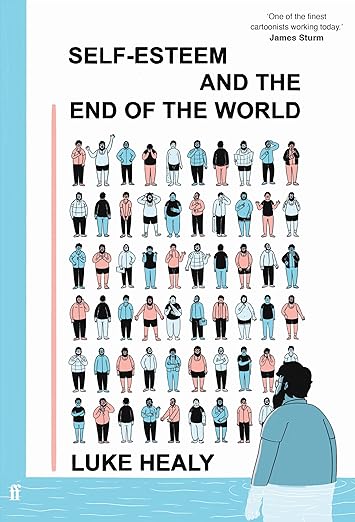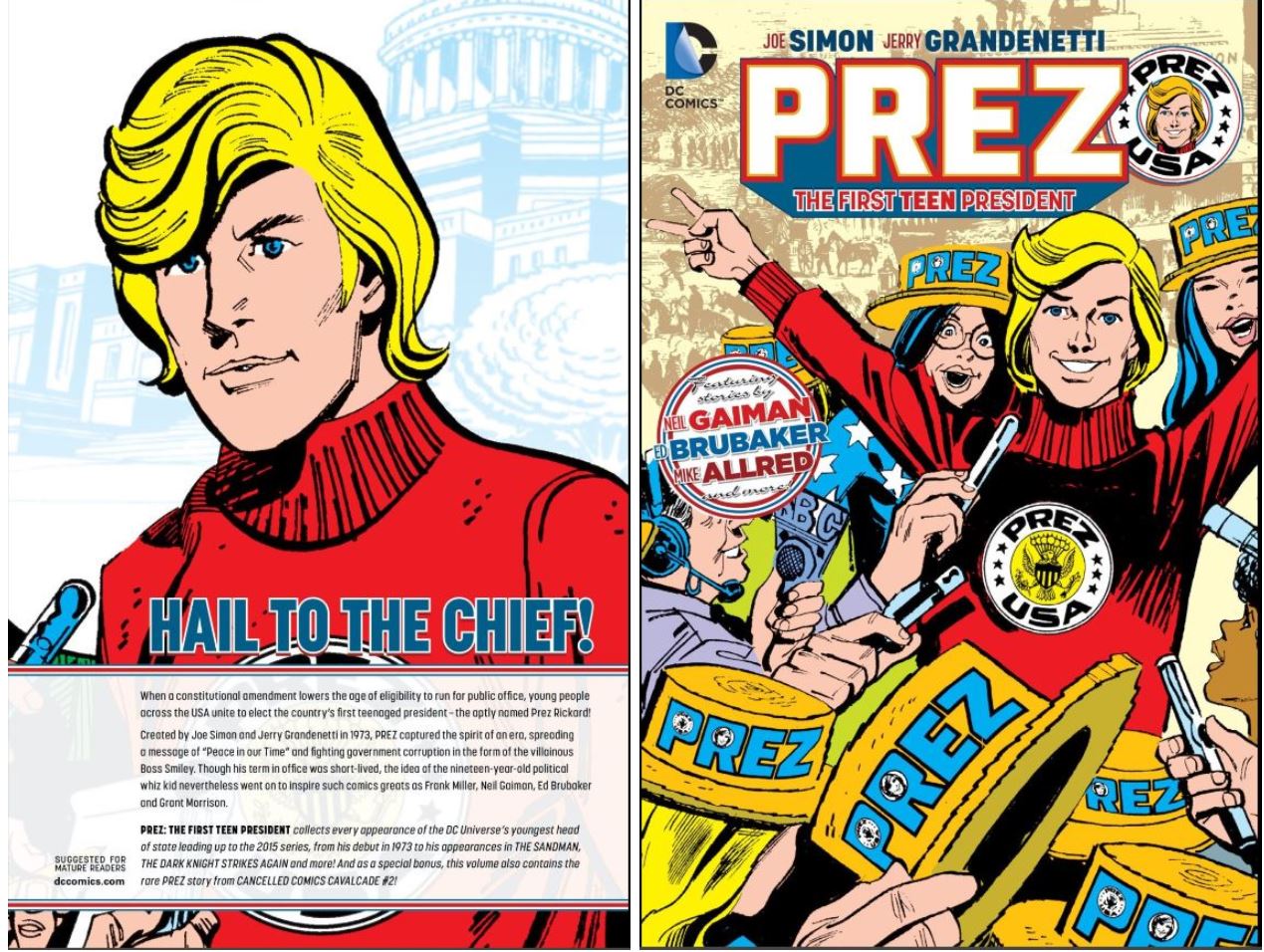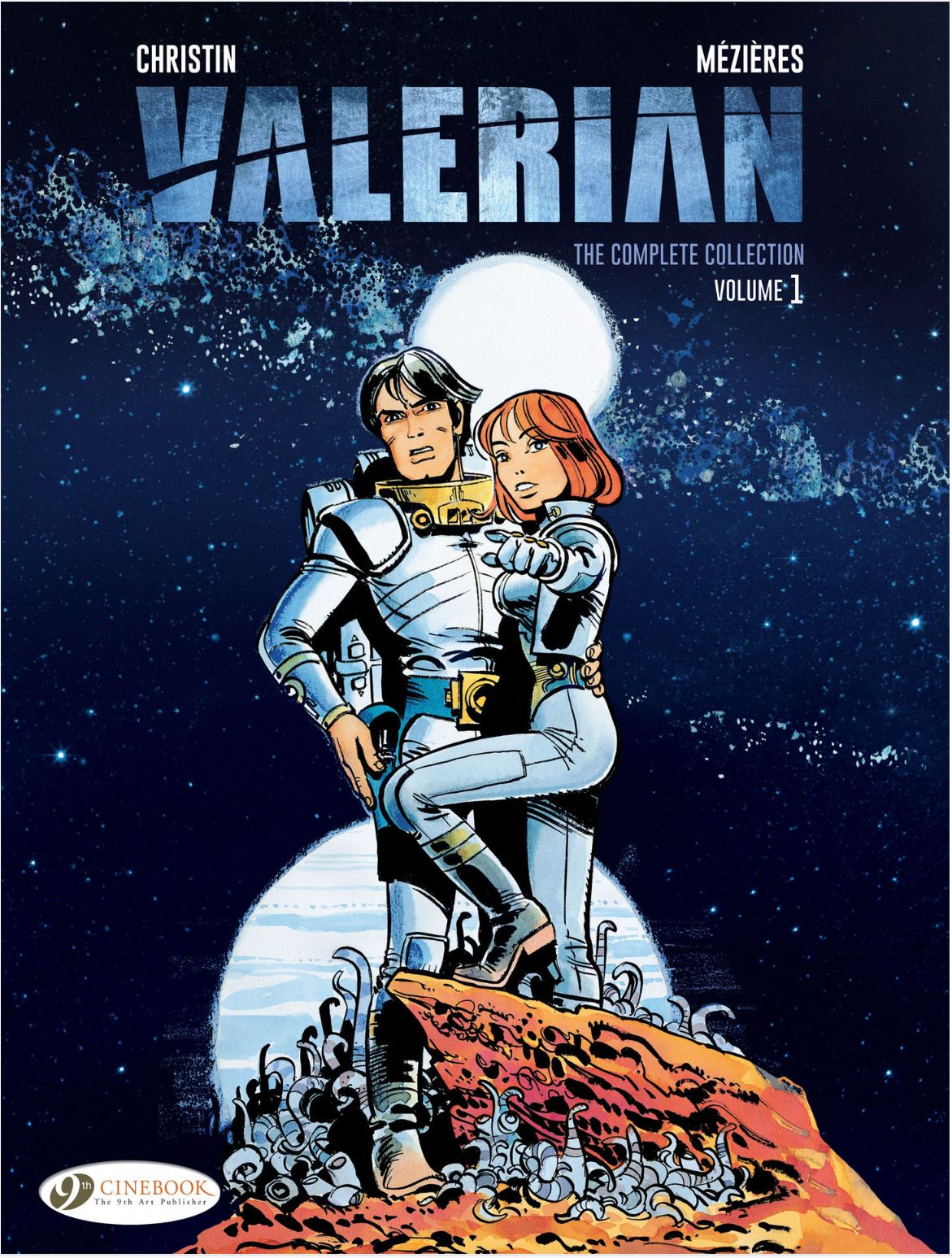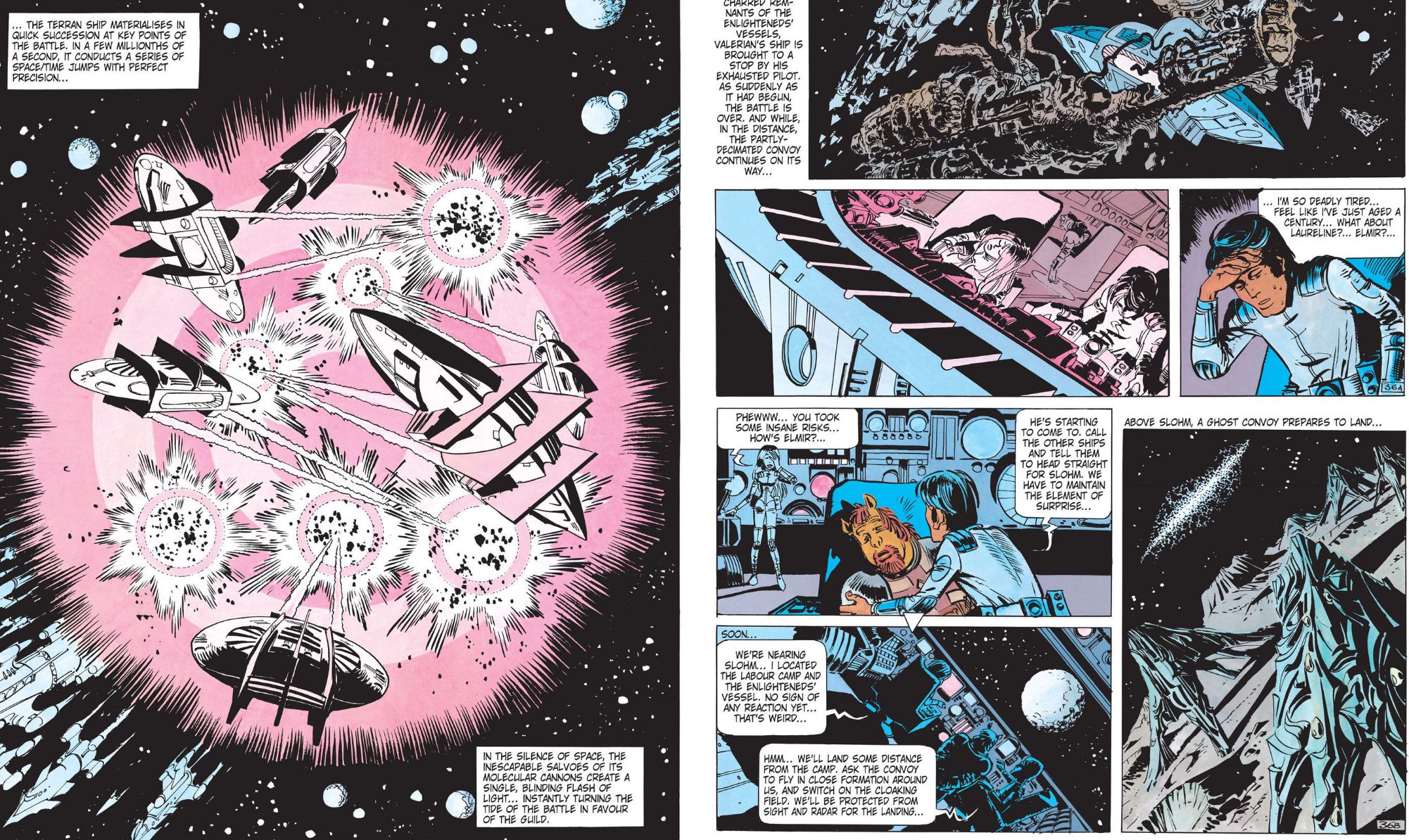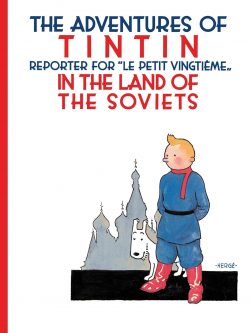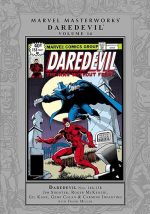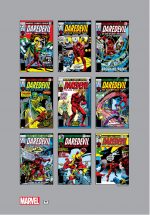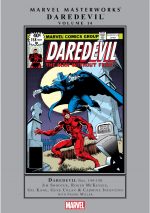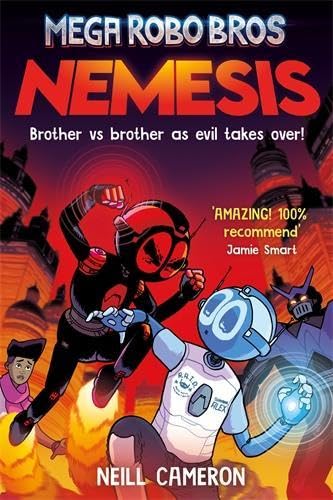

By Arnold Drake & Gene Colan, Steve Gerber, Roger Stern, Gerry Conway, Roger Slifer, Len Wein, Chris Claremont, Scott Edelman, Stan Lee, Sal Buscema, Don Heck, Al Milgrom, John Buscema & various (MARVEL)
ISBN: 978-1-3029-5043-9 (TPB/Digital edition)
With the final GoTG Marvel Cinematic interpretation done and dusted, there’s little to look forward too other than the past, but at least in this anniversary year – 55 and counting! – there’s this timely collection ideal for boning up on some of the lesser-known original stars…
There are two distinct and separate iterations of the Guardians of the Galaxy. The films concentrated on the second, but with inescapable connections between them and the stellar stalwarts here so pay close attention. The original comic book team were freedom fighters united to defeat an invasion a thousand years from the present. The other were a later conception: springing out of contemporary crises seen in The Annihilation publishing event.
This treasury of torrid tales gathers landmark moments of the former as seen in Marvel Super-Heroes #18, Marvel Two-In-One #4-5, Giant-Size Defenders #5, Defenders #26-29, the time-busting team’s first solo series as originally seen in Marvel Presents #3-12 and Thor Annual #6: collaboratively and monumentally spanning cover-dates January 1969 to December 1977. It features a radically different set-up than that of the silver screen stars, but is grand comic book sci fi fare all the same. One thing to recall at all times, though, is that there are two teams. Never the twain shall meet …until they one day did…
Despite its key mission to make superheroes more realistic, Marvel also always kept a close connection with its fantasy roots and outlandish cosmic chaos – as typified in the pre-Sixties “monsters-in-underpants” mini-sagas. Thus, this pantheon of much-travelled space stalwarts maintains that wild “Anything Goes” attitude in all of their many and varied iterations.
A blistering battle-fest opens with ‘Guardians of the Galaxy: Earth Shall Overcome!’ as first seen in new-concept try-out/Golden Age reprint vehicle Marvel Super-Heroes #18. Cover-dated January 1969, it went on sale mid-October 1968, just as the Summer of Love was dying.
This terse, grittily engaging episode introduced disparate freedom fighters reluctantly rallying and united to save Earth from occupation and humanity from extinction at the scaly claws of the sinister, reptilian Brotherhood of Badoon. It began when Jovian militia-man Charlie-27 returned home from a 6-month tour of scout duty to find his entire colony subjugated by invading aliens. Fighting free, Charlie jumped into a randomly-programmed teleporter and emerged on Pluto, just in time to accidentally scupper the escape of crystalline scientist and resistance fighter Martinex.
Both survivors are examples of radical human genetic engineering: manufactured subspecies carefully designed to populate and colonise Sol system’s outer planets, but now possibly the last individuals of their respective kinds. After helping the mineral man complete his mission of sabotage – by blowing up potentially useful material before the Badoon can get their hands on it – the odd couple set the teleporter for Earth and jump into the unknown. Unfortunately, the invaders have already taken the homeworld…
The Supreme Badoon Elite are there, busily mocking the oldest Earthman alive. Major Vance Astro had been humanity’s first interstellar astronaut; solo flying in cold sleep to Alpha Centauri at a plodding fraction of the speed of light. When he got there a millennium later, humanity was waiting for him, having cracked trans-luminal speeds a mere two centuries after he took off. Now Astro and Centauri aborigine Yondu are a comedy exhibit for the cruel conquerors actively eradicating both of their species.
The smug invaders are utterly overwhelmed when Astro breaks free, utilising psionic powers he developed during hibernation, before Yondu butchers them with the sound-controlled energy arrows he carries. In their pell-mell flight, the escaping pair stumble across incoming Martinex and Charlie-27 and a new legend of valiant resistance is born…
As envisioned by Arnold Drake, Gene Colan & Mike Esposito, the eccentric team were presented to an audience undergoing immense social change, with dissent in the air, riot in the streets and the ongoing Vietnam War being visibly lost on their TV screens every night.
Perhaps the jingoistic militaristic overtones were off-putting, or maybe the tenor of the times were against The Guardians, since costumed hero titles were entering a temporary downturn at that juncture, but whatever the reason the feature was a rare “Miss” for the Early Marvel Hit Factory. The futuristic freedom fighters were not seen again for years.
They drifted in limbo until 1974 when Steve Gerber incorporated them into some of his assigned titles (specifically Marvel Two-In-One and The Defenders), wherein assorted 20th century champions travelled into the future to ensure humanity’s survival…
In MTIO #4, ‘Doomsday 3014!’ (Gerber, Sal Buscema & Frank Giacoia) sees Ben Grimm – AKA The Thing – and Captain America catapulted into the 31st century to free enslaved humanity from the Badoon, concluding an issue later as a transformed and reconfigured Guardians of the Galaxy climb aboard the Freedom Rocket to help the time-lost champions liberate occupied New York before returning home.
The fabulous Future Force returned that visit in Giant Sized Defenders #5: a diverse-handed production with the story ‘Eelar Moves in Mysterious Ways’ credited to Gerber, Gerry Conway, Roger Slifer, Len Wein, Chris Claremont & Scott Edelman. Dependable Don Heck & Mike Esposito drew the (surprisingly) satisfying and cohesive results, revealing how the Defenders met with future heroes Guardians of the Galaxy in a time-twisting disaster yarn where their very presence seemed to cause nature to run wild. It was simply an introduction, setting up a continued epic arc for the monthly comic book…
Beginning with ‘Savage Time’ (Defenders #26 by Gerber, Sal Buscema & Colletta) it depicts The Hulk, Doctor Strange, Nighthawk and Valkyrie accompanying the Guardians back to 3015 AD in a bold bid to liberate the last survivors of mankind from the all-conquering and genocidal Badoon. The mission continued with ‘Three Worlds to Conquer!’, becoming infinitely more complicated when ‘My Mother, The Badoon!’ reveals sex-based divisions that so compellingly motivate the marauding lizard-men to roam and tyrannise, before climaxing triumphantly in rousingly impassioned conclusion ‘Let My Planet Go!’
Along the way the Guardians picked up – or been unwillingly allied with – an enigmatic stellar powerhouse dubbed Starhawk. Also answering to Stakar, he was a glib, unfriendly type who referred to himself as “one who knows” and infuriatingly usually did, even if he never shared any useful intel…
That portion of the saga is interspersed with the covers of latterday compilations Guardians of the Galaxy: Earth Shall Overcome Premiere Hardcover (by Gil Kane & Chris Sotomayor and Ron Wilson & Matt Milla), before the next giant leap…
Rejuvenated by exposure, the squad rededicated themselves to liberating star-scattered Humanity and having astral adventures, in a short-lived series in Marvel Presents (#3-12, February 1976-August 1977) before cancellation left them roaming the MU as perennial guest-stars in cosmically-tinged titles like Thor and The Avengers. That first solo run began with ‘Just Another Planet Story!’ – by Gerber, Al Milgrom & Pablo Marcos – with all Badoon removed from an exultant Earth and our now purposeless Guardians realising peace and freedom were not for them. Unable to adapt to civilian life, they reassembled, stole their old starship “The Captain America” and rocketed off into the void…
More compilation covers – Guardians of the Galaxy: Tomorrow’s Heroes Omnibus (by John Romita Sr & Veronica Gandini) and Guardians of the Galaxy: The Power of Starhawk Premiere HC by Milgrom & Tom Chu – interleave the unfolding saga, but the original text feature ‘Readers Space’ (episodically delineating future history of Marvel Universe Mankind using various deceased company sci fi series as mile markers, way stations and signposts) is bundled to the bonus section at the back of the book. At the time the roadmap firmly established a timeline which would endure for decades…
Back to comics and in MP #4, Gerber & Milgrom descended ‘Into the Maw of Madness!’ as the noble nomads pick up feisty teenage Nikki: a Mercurian survivor of the Badoon genocide, and noted first inklings that something vast, alien and inimical was coming from “out there” to consume the galaxy. The warriors also met cosmic enigma Starhawk’s better half Aleta: a glamorous woman and mother of his three children sharing his/their body at that time…
When the star-farers and their ship are swallowed by star-system-sized monster Karanada, they discover a universe inside the undead beast and end up stranded on the ‘Planet of the Absurd’ (Gerber, Milgrom & Howard Chaykin), allowing the author to indulge his gift for political and social satire as our heroes seek to escape a society comprising a vast variety of species which somehow mimics 20th century Earth…
Escape achieved, the fantastic fantasy accelerates to top gear when they crash into the heart of the invading force on a galaxy-sized planet in humanoid form. ‘The Topographical Man’ (inked by Terry Austin) holds all answers they seek in a strange sidereal nunnery where Nikki is expected to make a supreme sacrifice: one that changes Vance’s life forever in ways he never imagined.
This all transpires as they spiritually unite to ‘Embrace the Void!’ (Bob Wiacek inks) in a metaphysical rollercoaster which ends the menace of the soul-sucking galactic devourer. At this time deadlines were a critical problem and Marvel Presents #8 adapted a story from Silver Surfer #2 (1968) as the team find an old Badoon data-log and learn ‘Once Upon a Time… the Silver Surfer!’ had saved Earth from the alien predators in a two-layered yarn attributed to Gerber, Milgrom, Wiacek, Stan Lee, John Buscema & Joe Sinnott…
Back on track for MP #9, Gerber & Milgrom revealed ‘Breaking Up is Death to Do!’ as the Guardians’ ship is ambushed by predatory Reivers of Arcturus, leading into the long-awaited shocking origins of Starhawk and Aleta. It also set the assembled heroes on a doomed quest to save the bonded couple’s children from brainwashing, mutation and murder by their own grandfather in ‘Death-Bird Rising!’ before concluding ‘At War with Arcturus!’ (both inked by Wiacek).
The series abruptly concluded just as new scripter Roger Stern signed on with ‘The Shipyard of Deep Space!’, as the beleaguered and battered team escape Arcturus and stumble onto a lost Earth vessel missing since the beginning of the Badoon invasion. “Drydock” is a mobile space station the size of a small moon, built to maintain and repair Terran starships. However, what initially seems to be a moving reunion with lost comrades and actual survivors of many gene-gineered human subspecies eradicated by the saurian supremacists is revealed to be just one more deadly snare for the Guardians to overcome or escape…
The time-busting mayhem concludes for now with ‘Thunder in the 31st Century!’ (from Thor Annual #6, December 1977) by Stern, Sal Buscema & Klaus Janson,in which the mighty Thunderer is accidentally deposited in the Guardians’ era by a cyborg maniac named Korvac. The god warrior eagerly joins them in battling a gang of superpowered aliens to thwart Korvac’s scheme to make himself master of the universe before returning to his own place and time…
The aforementioned bonus bounty ending this titanic temporal tome also includes the cover of Astonishing Tales #29 (April 1975 and reprinting Marvel Super-Heroes #18), articles on Guardians of the Galaxy by Gerber and Stern from F.O.O.M. #21 (Spring 1978), original art pages and covers by Sal Buscema, Colletta, Milgrom, Rich Buckler, Wiacek & Janson and one last past collection cover – from Guardians of the Galaxy: Tomorrow’s Avengers vol. 2 TPB by John Buscema, Joe Sinnott & Thomas Mason.
This rousing record of riotous star-roving derring-do is a non-stop feast of tense suspense, surreal fun, swingeing satire and blockbuster action tightly tailored and on-target to turn curious moviegoers into fans of the comic incarnation, and beguile even the most jaded interstellar Fights ‘n’ Tights fanatic into dreaming again with eyes wide open.
© 2023 MARVEL.





